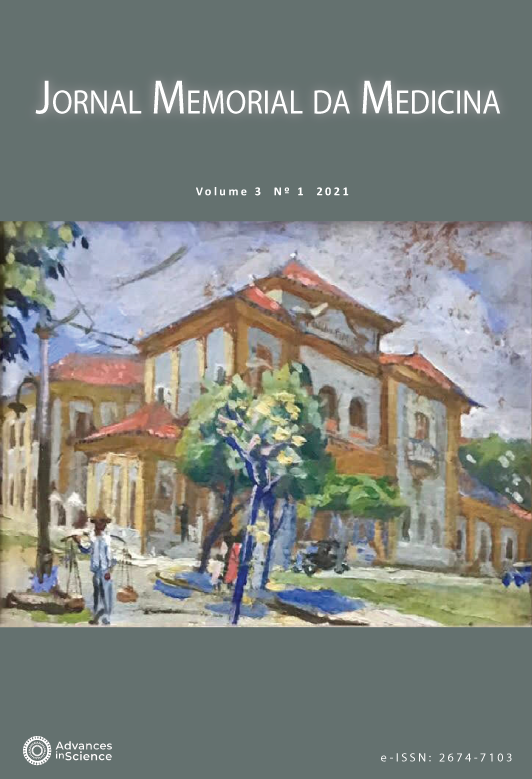The judicialization of medicine and its influence on the increased rates of caesarian section around the world
Visualizações: 592DOI:
https://doi.org/10.37085/jmmv3.n1.2021.pp.6-9Keywords:
“Obstetrics”; “Malpractice”; “Defensive medicine”; “Caesarean section”; “Litigation”Abstract
Caesarean rates around the world have grown exponentially in the last decades, being one of the most performed surgical procedures. One of the main causes is its indication as a defensive medicine tactic used by the obstetrician, intending to avoid legal action for medical error or negligence, therefore, the caesarean section presents itself to many obstetricians as a birth delivery option in which both, mother and newborn, will be more protected from possible complications. From the analysis of different works published later, it was possible to verify that medical conduct has been greatly influenced by the increase in the judicialization of medicine. Gynecology and Obstetrics is one of the most affected specialties, therefore specialists from different countries use caesarean section as a way to avoid a possible process due to medical error or negligence. A more in-depth analysis of this situation is needed, as well as the development of measures intended to remedy this problem and ensure the best possible health context for both the mother and the newborn.
Downloads
References
Gullo CE, Soler ZA, Cabrera EM, Irigoyen BB and Rodrigues DA. Cesárea eletiva no Brasil: imposição da autonomia da mulher ou do poder médico? Enferm Bras 2011;10(6):362-370 Doi: https://www.doi.org/10.33233/eb.v10i6.3887
Jesus GR, Jesus NR, Peixoto-Filho F and Lobato G. Caesarean rates in Brazil: what is involved? J Obstetric Anesthesia Digest 2016;36(1):8-9 Doi: https://www.doi.org/10.1097/01.aoa.0000479479.11602.6d
Figueiredo NSV. Fatores culturais determinantes da escolha da via de parto por gestantes. J Hu Revista 2010;36(4):296-306
Summerton N. Trends in negative defensive medicine within general practice. Br J Gen Pract 2000;50(456):565-566
Ionescu CA, Dimitriu M, Poenaru E, Bănacu M, Furău GO, Navolan D and Ples L. Defensive caesarean section: A reality and a recommended health care improvement for Romanian obstetrics. J Eval Clin Pract 2019;25(1):111-116 Doi: https://www.doi.org/10.1111/jep.13025
Hamasaki T and Hagihara A. A comparison of medical litigation filed against obstetrics and gynecology, internal medicine, and surgery departments. BMC Med Ethics 2015;16(1):72 Doi: https://www.doi.org/10.1186/s12910-015-0065-1
Boyaciyan K and Camano L. Profile of denounced physicians that practice obstetrics and gynecology in the state of São Paulo. Rev Assoc Med Bras (1992) 2006;52(3):144-147 Doi: https://www.doi.org/10.1590/s0104-42302006000300013
Ramos Seugling F, Perche ME and Mendes RT. Distribuição dos processos disciplinares pelo CREMESP-Conselho Regional de Medicina do Estado de São Paulo e seus resultados nas diversas especialidades médicas. Bioethikos 2007;1(2):56-62
Asher E, Dvir S, Seidman DS, Greenberg-Dotan S, Kedem A, Sheizaf B and Reuveni H. Defensive medicine among obstetricians and gynecologists in tertiary hospitals. PLoS One 2013;8(3):e57108 Doi: https://www.doi.org/10.1371/journal.pone.0057108
Tussing AD and Wojtowycz MA. Malpractice, defensive medicine, and obstetric behavior. Med Care 1997;35(2):172-191 Doi: https://www.doi.org/10.1097/00005650-199702000-00007
Domingues AP, Belo A, Moura P and Vieira DN. Medico-legal litigation in Obstetrics: a characterization analysis of a decade in Portugal. Rev Bras Ginecol Obstet 2015;37(5):241-246 Doi:https://www.doi.org/10.1590/so100-720320150005304
Chou MM. Litigation in obstetrics: a lesson learnt and a lesson to share. Taiwan J Obstet Gynecol 2006;45(1):1-9 Doi: https://www.doi.org/10.1016/s1028-4559(09)60183-2
Rossi AC and D'Addario V. Maternal morbidity following a trial of labor after cesarean section vs elective repeat cesarean delivery: a systematic review with metaanalysis. Am J Obstet Gynecol 2008;199(3):224-231 Doi: https://www.doi.org/10.1016/j.ajog.2008.04.025
Durrance CP and Hankins S. Medical Malpractice Liability Exposure and OB/GYN Physician Delivery Decisions. Health Serv Res 2018;53(4):2633-2650 Doi: https://www.doi.org/10.1111/1475-6773.12813
Schifrin BS and Cohen WR. The effect of malpractice claims on the use of caesarean section. Best Pract Res Clin Obstet Gynaecol 2013;27(2):269-283 Doi: https://www.doi.org/10.1016/j.bpobgyn.2012.10.004
Downloads
Published
How to Cite
Issue
Section
License
Os direitos autorais para artigos publicados no Jornal Memorial da Medicina são do autor, com direitos de primeira publicação para a revista. Em virtude de aparecerem nesta revista de acesso público, os artigos são de uso gratuito, com atribuições próprias, em aplicações educacionais e não comerciais. O Jornal Memorial da Medcina permitirá o uso dos trabalhos publicados para fins não comerciais, incluindo direito de enviar o trabalho para bases de dados de acesso público. Os artigos publicados são de total e exclusiva responsabilidade dos autores. Há encargos para submissão no processamento de artigos (Articles Processing Charge - APC).







